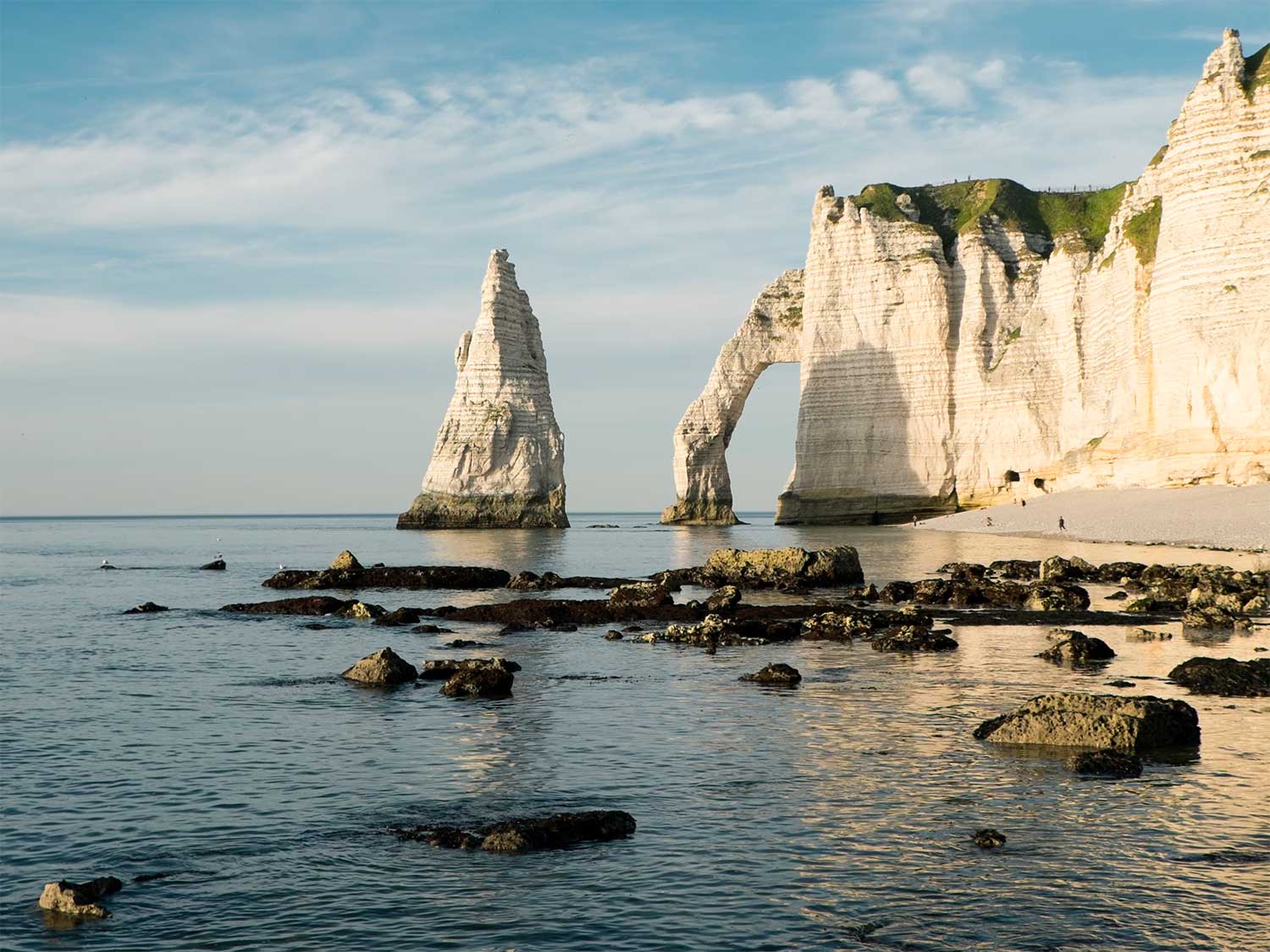Cliffs, sea, and heritage: why Étretat in Normandy remains a must-see destination for a trip to France, beyond its postcard appearance.
The reasons for Étretat’s success
Located on the Alabaster Coast in Normandy, the town of Étretat attracts hundreds of thousands of visitors every year. This small coastal village of less than 1,500 inhabitants has become a major landmark for travelers in France, especially those looking for something different from big cities or traditional seaside resorts.
Unlike many over-exploited tourist sites, Étretat offers a concentration of rare geographical, cultural, and historical features within a small area. Its appeal is not limited to the famous cliff of Aval or the needle, although these topographical features are its most immediate landmarks. Étretat is a synthesis of accessible nature, ancient architectural heritage, and rich cultural history.
It is not a place where you stay for ten days, but it is a stopover where everyone, whether they are interested in geology, painting, literature or hiking, can find something concrete to observe, understand and question. The place has a concentration of tangible and lasting elements that justify its popularity, beyond a simple social media effect or photographic appeal.
The rest of this article analyzes the specific foundations of this attraction. It examines the natural characteristics, historical and cultural contributions, tourist organization, and the limits of this success.
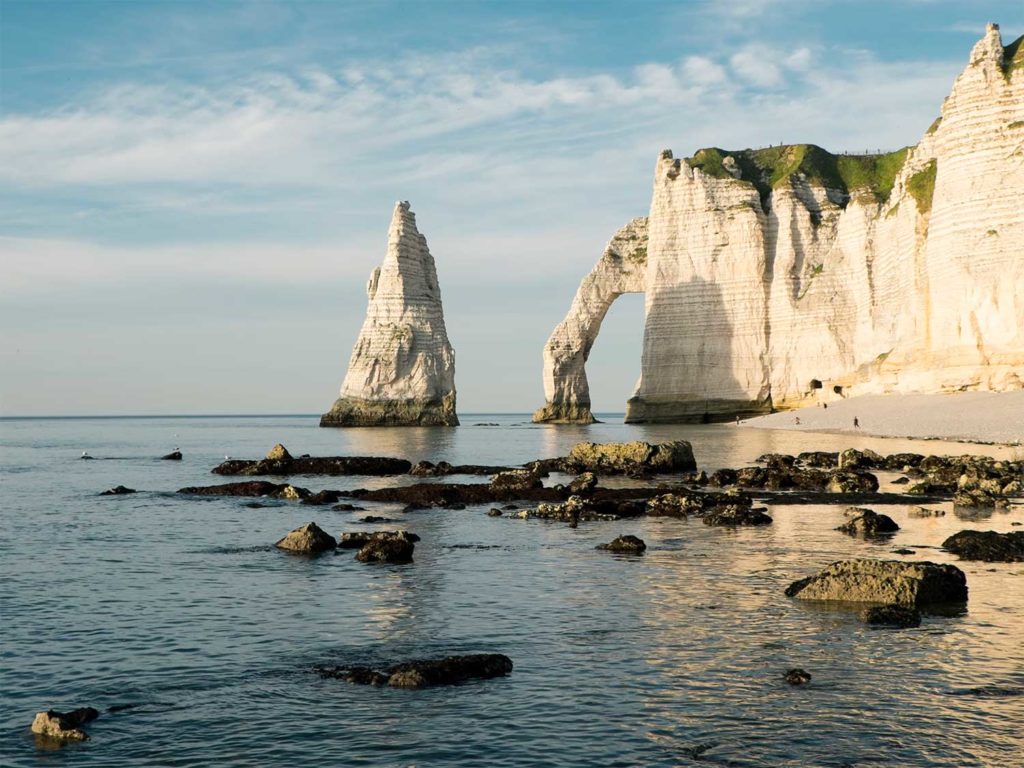
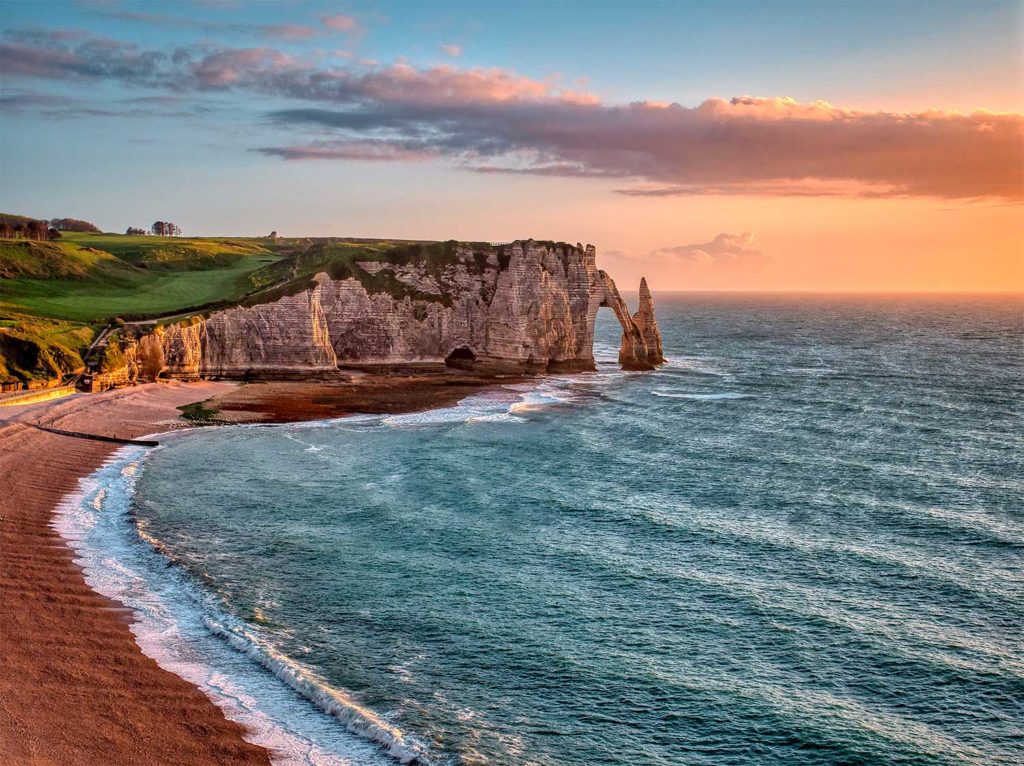
A structured, legible, and photogenic natural landscape
Accessible geological formations
The Étretat coastline is distinguished by its white chalk cliffs, carved out by spectacular formations: the Aval cliff, the Aiguille (55 meters high), the Manneporte, and the Amont cliff. This landscape, shaped by marine erosion and prevailing northwesterly winds, offers a rare geological clarity. Unlike other more diffuse coastal regions, the whole area is compact and can be explored on foot in a few hours.
The cliffs also offer stratification visible to the naked eye, allowing direct observation of the sedimentary formations of the Cretaceous period. This geological clarity attracts walkers and scientists alike.
Hiking trails seamlessly integrated
The coastal paths, notably the GR21, run directly along the top of the cliffs. The integration of the path into the natural landscape provides visual and physical access to the site without any intrusive infrastructure. The panorama speaks for itself: no artificial viewpoints are necessary.
The vertical space between the sea and the agricultural plateau, typical of the Pays de Caux, gives the landscape an immediate depth. The promontory of the Notre-Dame de la Garde chapel is 90 meters above sea level. This elevation allows for a clear view of the site without the need for framing effects.
Contrasting weather that serves the location
The maritime climate often offers changing conditions: morning fog, sudden clear spells, gusts of wind, and low-angled light in the late afternoon. These elements constantly transform the visual relief of Étretat. Far from being a disadvantage, this variability accentuates the dramatic perception of the place.
A locally rooted historical and artistic heritage
A strong literary connection
Étretat is not just a backdrop for tourism: the place has been inhabited, described, and used as a setting by major authors. Gustave Flaubert stayed there several times in the 1840s. Guy de Maupassant set several short stories there. But it was Maurice Leblanc, with his character Arsène Lupin, who gave the site a place in the collective imagination. The plot of The Hollow Needle, published in 1909, uses the real landscape of Étretat as the basis for the story. This convergence between geography and narrative is not common in French literature.
A visual landscape prized by painters
The cliffs have been depicted by several artists since the mid-19th century, including Claude Monet, who produced a series of paintings of the arches and light of Étretat between 1883 and 1886. He painted the site from different angles and at different times of day, which helped to establish the landscape in the history of European painting.
This documentary approach through Impressionist painting reinforced Étretat’s appeal to cultured and foreign tourists. The Le Clos Lupin museum and the galleries in the town center continue this visual tradition.
Old buildings in harmony with their surroundings
The center of Étretat blends harmoniously with its natural surroundings. The Norman-style buildings (half-timbered, slate roofs, half-timbering) blend into the landscape. There are no high-rise buildings or ostentatious architecture. The old market hall, the covered market, Notre-Dame church and the former casino are all modest structures that are in keeping with the area.
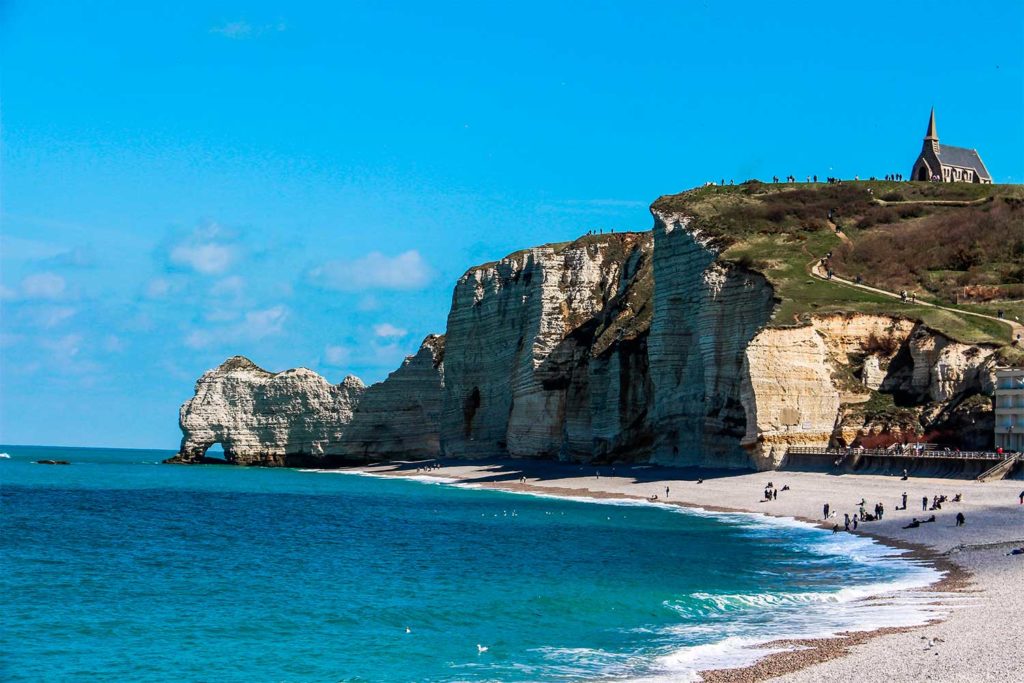
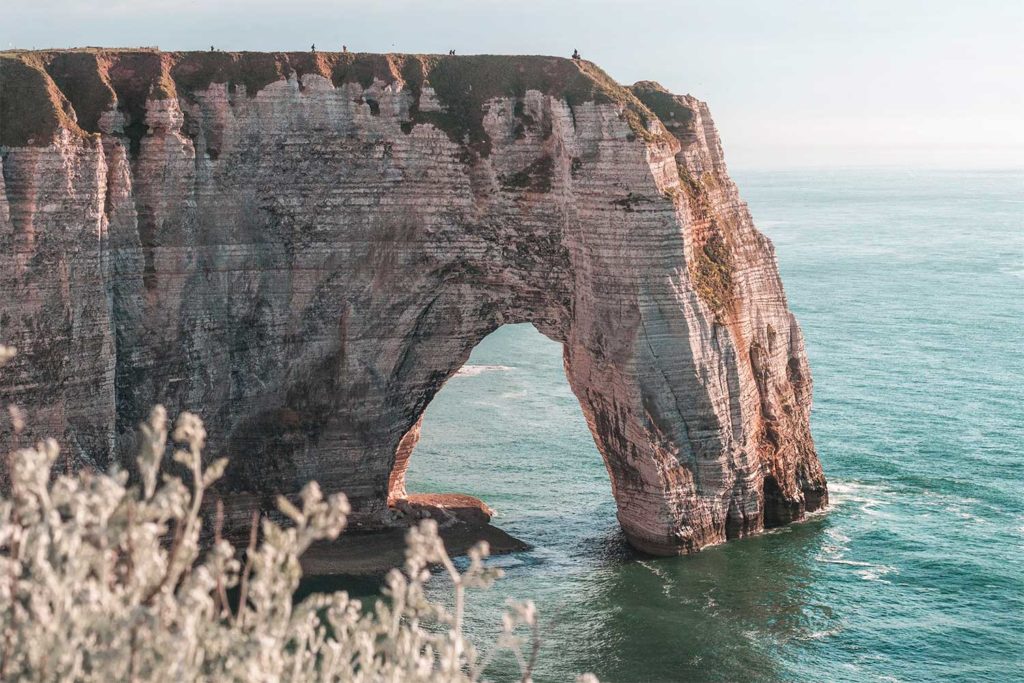
Balanced tourism management but under pressure
A destination with high seasonal visitor numbers
In 2023, Étretat welcomed around 1.5 million visitors. Most of these visitors come between June and September, with daily peaks of over 20,000 people on summer weekends. However, the municipality is only designed for a permanent population of less than 1,500 residents.
The hotel infrastructure remains limited, with fewer than 800 tourist beds officially registered. This saturation has an impact on parking (which is usually full from 10 a.m. onwards), the quality of the welcome, and waste management.
Efforts to preserve the natural surroundings
The municipality has banned motorized access to certain areas, favored partial pedestrianization of the seafront, and restricted water sports near the needle. Information panels about the flora and fauna have been installed to limit human impact on the cliffs.
However, these measures are not always sufficient to contain the effects of overcrowding, such as trampling of paths, soil degradation, and noise pollution. Consideration has been given to a daily access quota system, as on the island of Bréhat and Mont Saint-Michel, but this has not yet been implemented.
A site victim of its digital success
Social media, particularly Instagram and TikTok, have helped to popularize Étretat among a young audience. This massive exposure has not always been accompanied by a conscious appreciation of the site. Many visitors come to reproduce an image, with no interest in the history or layout of the site.
This tension between digital visibility and the actual capacity of the area raises questions. Étretat has become a “must-see” destination, which tends to marginalize those who are looking for more specific content or understanding.
A place that questions the very notion of visiting
Étretat, like other natural sites dense with meaning (Cap Fréhel, Pont d’Arc, Puy de Dôme), raises the question of the purpose of a trip to France. Should we travel to understand a place, or simply to say that we have been there?
In the case of Étretat, the geographical, artistic, geological, and literary density allows for a brief but concrete experience. The elements of observation are accessible, clear, and limited in number, requiring no complex itinerary or prior knowledge. It is this immediacy, combined with the density of the site, that explains why Étretat, despite its limitations and tourist excesses, remains a coherent and structured stop on any serious trip to France.
XperienceFrance is your travel specialist in France.
